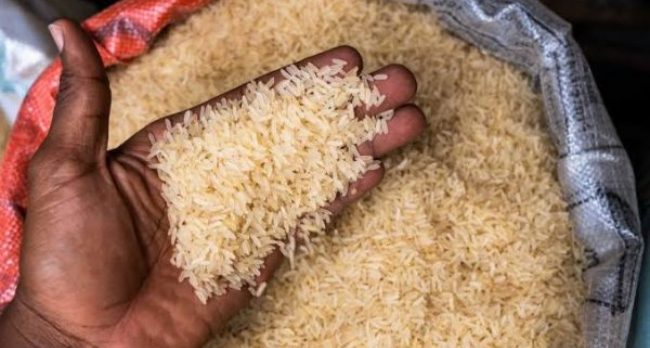Nigeria, among the world’s largest rice importers, is benefitting from a global slump in rice prices that have reached multi-year lows. This trend follows the removal of export curbs by India, which had imposed restrictions on rice exports in 2022. As a result, global rice prices have significantly dropped.
In April, the price of Indian parboiled rice hit a 22-month low, while prices in Thailand dropped to a three-year low, and in Vietnam, they reached nearly five-year lows. This price correction has occurred after a nearly one-third drop from the peaks of 2024. Traders and industry experts predict that rice prices will remain relatively stable for the remainder of 2025, constrained by large surpluses in major rice-exporting countries.
B.V. Krishna Rao, president of the Rice Exporters Association, stated that the price rebound is unlikely due to a supply glut. Prices are expected to fluctuate around $390 per ton for 5% broken rice, with little variation unless unexpected events, such as monsoon disruptions, affect production.
While the drop in rice prices benefits price-sensitive consumers in Africa and other regions, it poses a challenge for farmers in Asia, who produce nearly 90% of the world’s rice. In 2023, Nigeria imported $7.26 million worth of rice, making it the 158th largest importer globally. Its main sources of imports included India, the United Arab Emirates, Thailand, Benin, and the United States.
The country saw a surge in rice imports, particularly from India ($5.9M), the UAE ($743K), and Thailand ($307K). These rising import trends have occurred as rice-exporting countries like India lifted restrictions, flooding the market with more affordable rice. With India’s rice production expected to hit record levels, the competition among rice exporters has intensified, contributing to the global price decline.
India, which has a record stockpile of rice, is poised to increase exports by nearly 25% in 2025, bringing its total rice exports to a new high of 22.5 million metric tons. This will solidify India’s position as the dominant player in global rice exports, surpassing the combined market share of Thailand, Vietnam, Pakistan, and the United States.
India’s move to lift export restrictions has already caused disruptions for other suppliers. In the first quarter of 2025, Thailand saw a 30% drop in its rice exports as buyers shifted to India due to lower prices. Similarly, Vietnam is expected to see a 17% decline in its rice exports in 2025.
Countries in Africa, including Nigeria, Ghana, and Senegal, are among the major beneficiaries of the rice price slump. These regions, along with the Philippines and Indonesia, are securing more affordable rice, bolstering food security despite challenges.
In January 2022, Nigeria imposed a ban on the import of parboiled rice through seaports, with the Nigeria Customs Service announcing the restriction. However, in January 2025, the country received a shipment of brown rice from Thailand, signaling efforts to manage food costs amidst growing consumer pressure. The shipment, totaling 32,000 tons, was made possible by a tariff moratorium on food crops such as rice, wheat, and corn.
Despite the tariff waiver, rice purchases have remained cautious, as there is concern about the impact on local producers. Nevertheless, Nigeria is focused on improving its food supply and increasing accessibility for its citizens.
Channelstv













